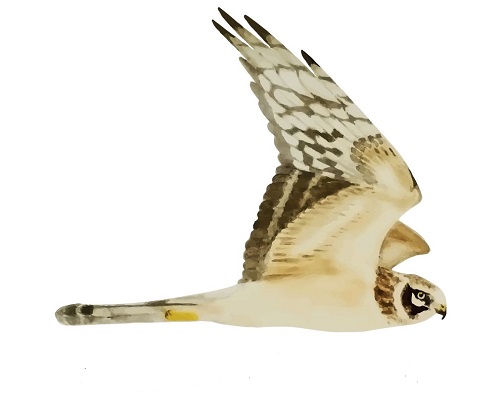Her på Skagen Fuglestations blog bringes korte nyheder i dagbogsformat om hændelser på fuglestationen.
Where did all the blackcaps come from?
This morning we went ringing without big expectations because the weather, although nice, did not promise a lot of birds with north winds and scattered rain clouds. It was good for a beautiful sunrise, though. The payment for getting up at 2.30 in the morning…
We are only two people now so not having too many birds is fine. We got a big surprise, however, when we started checking the nets and they were full of blackcaps (munk) in several net checks. Of course, we know that blackcaps are breeding around our nets and we can hear them singing and we also expect the young birds to fledge soon so there will be more. But today we ringed 30 (!) adult blackcaps almost all of which had a brood patch, meaning that they are actively breeding here or in the near surroundings. Also, very few of them were recaptures and seeing that we already had quite a few blackcaps yesterday we simply don’t know how they suddenly all ended up in our nets. The best guess is that the Corona restrictions for blackcaps have been lifted and they are finally allowed to have parties again.
The nice thing about catching a lot of birds of the same species is that you get really good in aging them and you can see even small differences in wear. You can look for the moult limit in the alula and the rather heavy wear of the flight feathers in this second year male:
Also getting a lot of data from birds of one species helps to do population studies and the like. So we definitely don’t complain about having lots of blackcaps. After all, they are very nice birds with a very beautiful song!
Next to lots of blackcaps we also caught a very pretty adult male redpoll (lille gråsisken).

A nice surprise was a rosefinch (karmindompap). A male had been singing close to the ringing site many days but not continuously so we had no idea that it actually had a territory there but today we caught a female with an active brood patch. This is nice because in the last few years this bird was not known to breed around Skagen.

In the afternoon we went to the cormorant lake to monitor the breeding success there. Many chicks are by now so big you can also easily see them with binoculars. However, their feathers are still very thin and cannot get wet, so the parents still have to provide food and also protection from both sun and rain for the little ones. But it is good to see that they are growing fast and it looks like almost all nests have chicks by now.
Ringmærkning (Kabeltromlen):
Gransanger – Chiffchaff - 1
Havesanger – Garden Warbler - 4
Munk – Blackcap – 30
Topmejse – Crested Tit – 9
Rørsanger – Reed Warbler – 1
Gærdesanger – Lesser Whitethroat – 1
Lille Gråsisken – Redpoll – 2
Gærdesmutte – Wren – 1
Karmindompap – Rosefinch – 1
Total: 50
People : Martina Hillbrand and Amandine Doré
Klik her for at se dagens observationer indtastet i Dofbasen af observatører i området
Klik her for at se opsummeret observationer af rovfugle i Skagen





